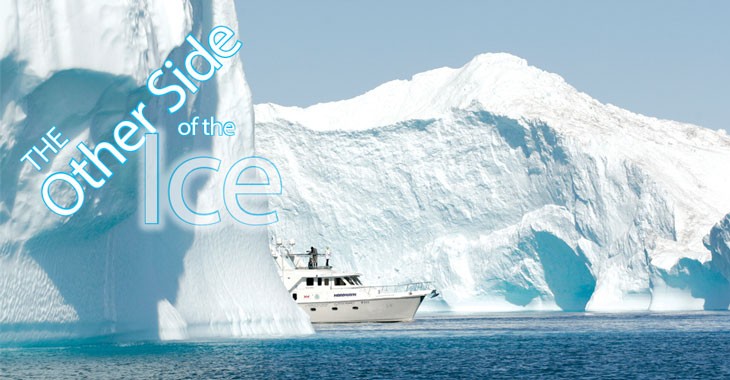It was 2009, when my family and I set out aboard ‘Bagan’, my 57’ Nordhavn for the infamous Northwest Passage – that elusive route through the Arctic Sea that connects the Atlantic and the Pacific oceans. The famous and ill-fated Franklin Expedition of 1845-1847 was equipped with the wooden ships HMS Erebus and HMS Terror but they failed to find a passable route and after two winters trapped in the ice, all 129 men eventually died. To this day no trace of the ships and only a scattering of bones of the men have been found. Since 1906, a staggering number of people have died trying to complete this journey. From Newport, RI, through the Arctic and down to Seattle, it would be a five month, 8,500 mile trek filled with deadly danger from ice and severe weather.
Some fifteen years earlier I had gone through an emotional divorce, and the idea of reuniting with my four children and stepchildren on the trip of a lifetime seemed – at the time – like a good way to bring us back together. Admittedly, we embarked with untold hurts, and unspoken mistrusts. Mother Nature’s fury was not on our side. “The Other Side of the Ice” is my book – and a film by the same name – that details the survival, adventure and ultimately redemption of our epic journey.
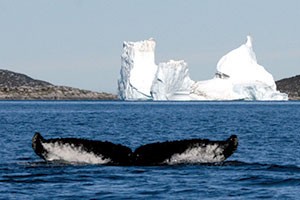
ST: The International Hydrographic Organization defines the Northwest Passage in relation to known points of reference. On the west, it begins at the eastern limit of the Beaufort Sea (70°36’N 127°32’W). On the north, the boundary is roughly The Arctic Ocean and Ellesmere Island. The southern boundary is the mainland coast of the Hudson Strait and the northern limits of Hudson Bay. To the east, the Northwest passage begins just south of Ellesmere Island between C. Sheridan and Cape Norton Shaw (76°29’N 78°30’W).
PBC: The Inuit, who have explored and lived on and in these waters for thousands of years, traditionally refer to this passage as “Tallurutik,” meaning “linear landscape.” Having been through it now yourself, what do you call it? What does your family call it?
ST: I think at one time or another all of us referred to it as “The back side of the moon”. With a slight twist on the translation of the Inuit word I think that “lunar landscape” pretty best describes what we saw in the Northwest Passage. To the untrained eye, mine, it’s beyond desolate; barren, rock strewn, everything a shade of grey or brown. It’s only when you look closely that you can see the slight evidence of lichens that Franklin turned to, beside his boots, for survival on his first land exploration to The Passage.
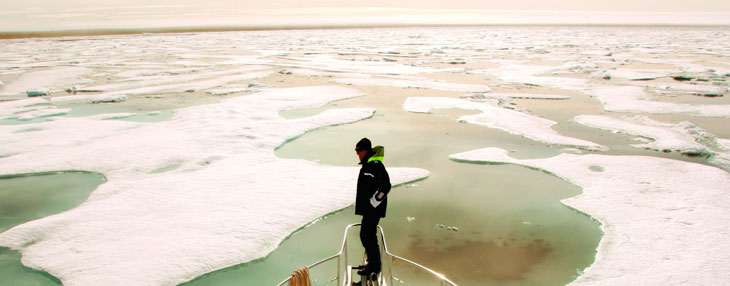
ST: Good question. In 2006 I was having dinner in New York with some friends when someone started asking me about my time at sea and my film making. To these lawyers and bankers I was a bit of an oddity. At one point one of them asked “What would be your ultimate adventure?” Before I even knew that I was responding to his question, out of my mouth popped, “The Northwest Passage”. And, as they say, that was that.
The next day I started making phone calls, the first being to my 31 year-old stepdaughter, Dominique. Dom and I had done many offshore miles together and I knew that this would be something she’d be fully capable of doing. At first she thought I was joking with her, but the more I talked about attempting The Passage and the rich but tragic history of all of those who have tried to find and transit it, the more intrigued she became. I next ran the idea past my 24 year old son, Sefton, who loved the idea but due to college commitments he would only be able to do a third of the trip. Then, after 12 years of not communicating with him, my 34 year old stepson, Chauncey, got in touch about two months before we left for The Passage asking if there was any way for him to do even a small leg of the trip. Now here’s the amazing part; Sefton got permission from his college to put a semester on hold and Chauncey was laid off from his job leaving both free to do the entire trip. Long story short; this was going to be the first time since the family’s divorce 15 years earlier that we were all going to be together for the first time.
PBC: I know you get into this more in your book, but just how extensive was your preparation and research for this journey and how did you plan out the fuel and food drops you would need?
ST: First and foremost were the safety concerns. We went through Bagan with a fine-tooth comb. Everything from water pumps to electronics was broken down and inspected. If there was a newer and better model available it got replaced. We broke down the engine and went through it piece by piece. Everything was covered; new life raft, satellite communications, water maker, emergency rations, each person was assigned his own survival suit and had to pass the 30 second test. New ship’s computers, all electronic charts were backed up by their paper equivalent. We even pulled Bagan’s shaft and inspected it. We had backup parts for our backup parts including a spare prop.
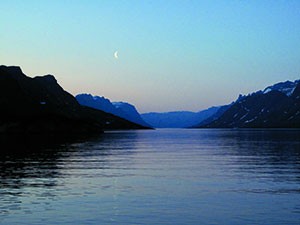
PBC: We certainly don’t have space here to tell the entire story – that’s better told in the movie available on iTunes, and as I’m experiencing personally, in your book (I’m currently beginning the chapter you simply entitled “Stuck”). So let’s skip to the end, you make it through the ice and see open water ahead of you….how do you feel?
ST: Mentally, physically and emotionally exhausted. We had just spent two days trapped in the ice, being pushed towards a rugged, rock bound shore and the only thought that kept running through my head was, “Have I brought my family together just to lead them to their deaths?” Something no father let alone trip leader should ever have to ponder. Hundreds of explorers had died trying to do what we were attempting to do. Why not us? Who says that our names wouldn’t be added to that tragic list? We were all exhilarated and greatly relived that we had finally broken free of the ship-killing ice but also knew that we had over 3,000 miles ahead of us… winter was approaching quickly, and we were running late.
PBC: Ok, so now you’re back home safely and the real work of telling the story, editing the photographs, writing and publishing the book and making the movie begins. In reflecting back, what did this journey teach you personally? What would you say your kids learned? Would you do it again, perhaps as a guide for someone else?
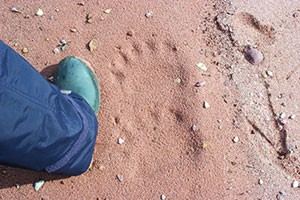
I’m very, very pleased to say that the book version of “The Other Side of The Ice” was awarded “Best Nonfiction- Narrative” by the International Book Awards and is currently on four of Amazon’s Best Seller lists. The documentary film was recently awarded an Emmy Award for “Outstanding Achievements in Documentaries”.
PBC: Where is Bagan now? What are your future plans?
ST: Bagan was sold and is luxuriously enjoying a well-earned retirement around the Vancouver area. As for me, I’m working on another book, fiction, which will hopefully be ready to send to the publishers this spring. I’m also starting to plan for a kayak trip down the length of the Connecticut River during the summer of 2015. My hope is to travel all 405 miles from the source in Canada to its southern end on Long Island Sound. Then write another book or perhaps another film.
Keyword : Alberta BOATING, BC BOATING, Boating, boating adventures, BOATING destinations, BOATING facilities, boating in Canada, BOATING in New Brunswick, Boating in Nova Scotia, Boating in PEI, Boating in Quebec, BOATING in Saskatchewan, boating lifestyle, BOATING marinas, boating ontario, Docks, Manitoba BOATING, Marinas, Maritime boating destinations, ontario boating, power boating, Power Boating destinations, where to go boating Alberta BOATING, BC BOATING, Boating, boating adventures, BOATING destinations, BOATING facilities, boating in Canada, BOATING in New Brunswick, Boating in Nova Scotia, Boating in PEI, Boating in Quebec, BOATING in Saskatchewan, boating lifestyle, BOATING marinas, boating ontario, Docks, Manitoba BOATING, Marinas, Maritime boating destinations, ontario boating, power boating, Power Boating destinations, where to go boating
